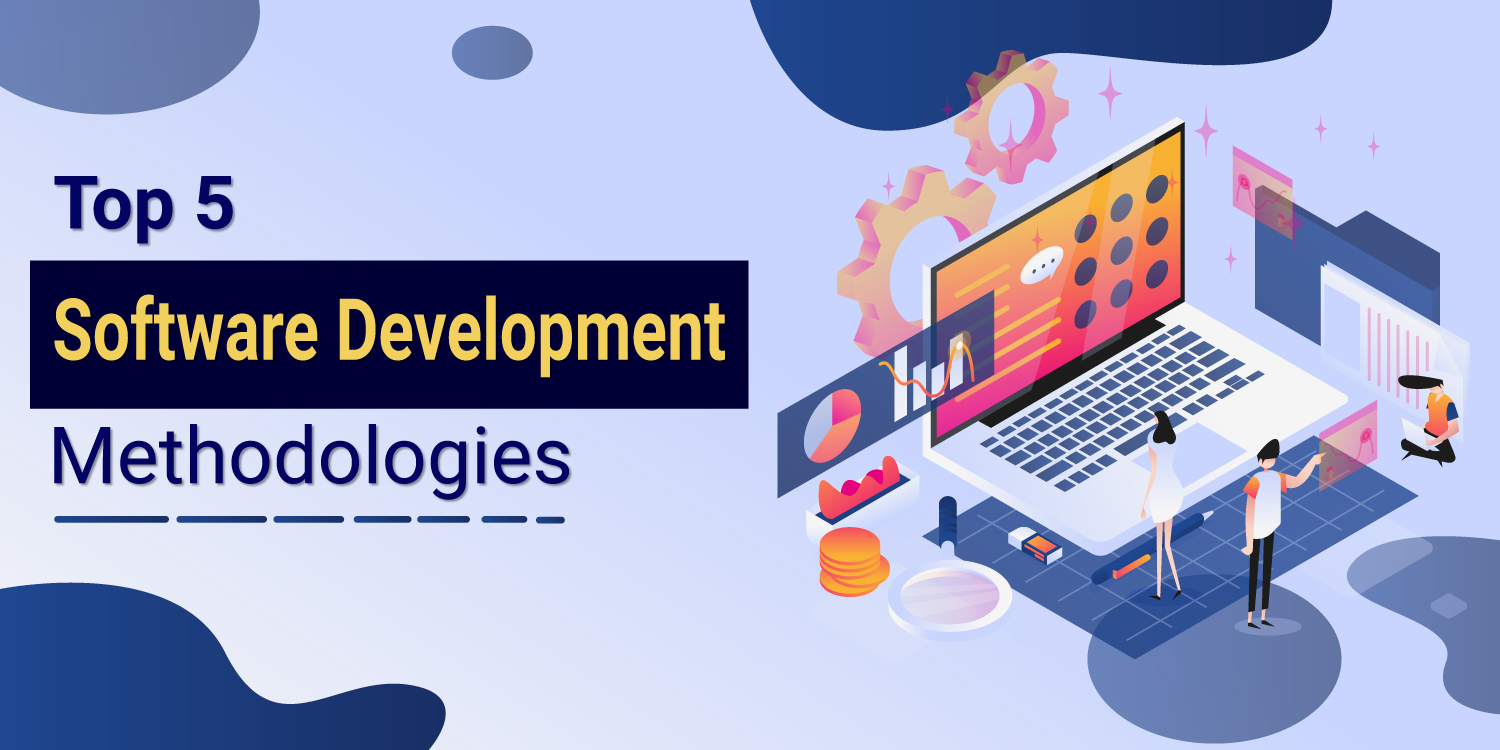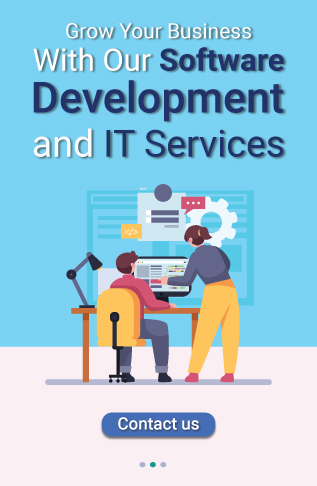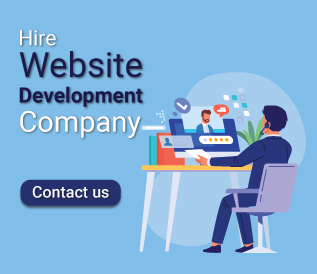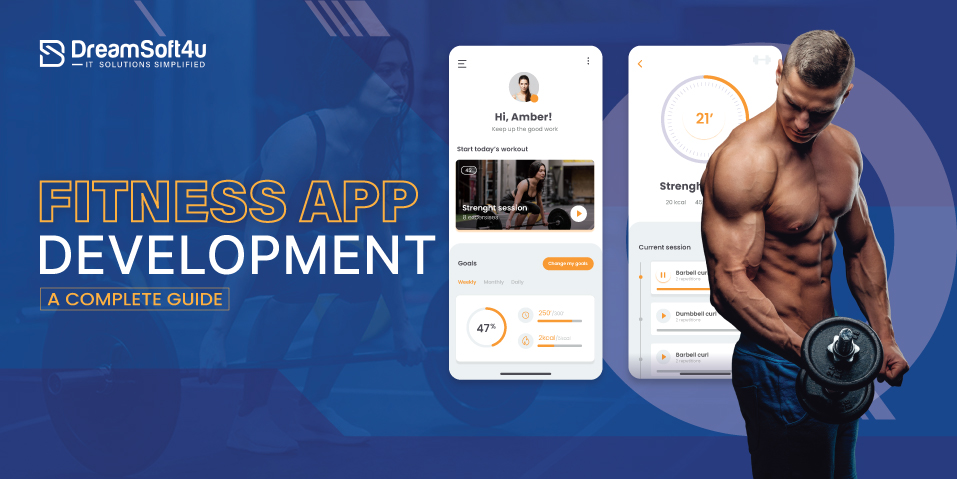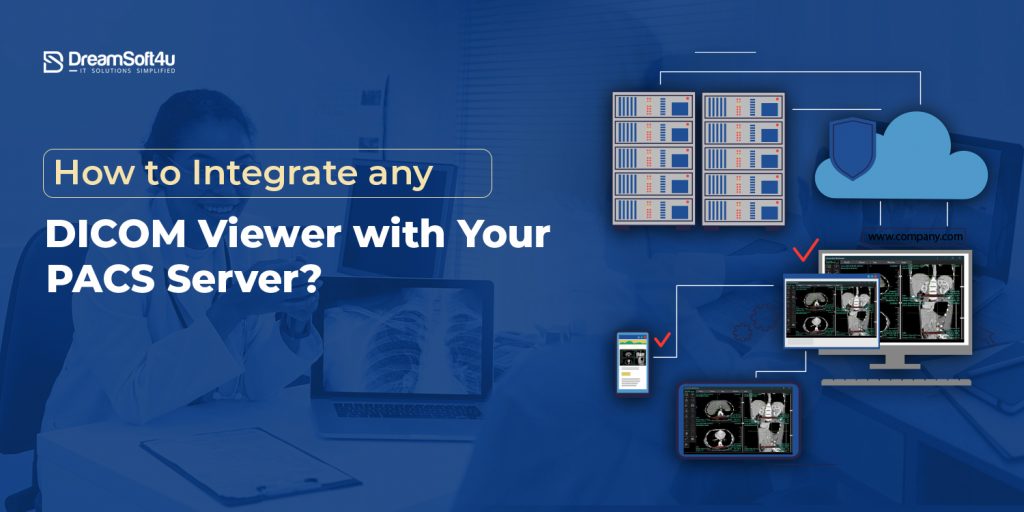Software development is the process of dividing software development work into distinct phases to improve design, product management, and project management. It is also known as a software development life cycle. Top 5 Software Development Methodologies may include the pre-definition of specific deliverables and artifacts that are created and completed by a project team to develop or maintain an application.
Majority of modern development processes are agile-based, but there are also other well-known methodologies, such as waterfall, spiral, rapid, and extreme. Let’s discuss these in details.
Table of Contents
Toggle5 Different Software Development Methodologies Models
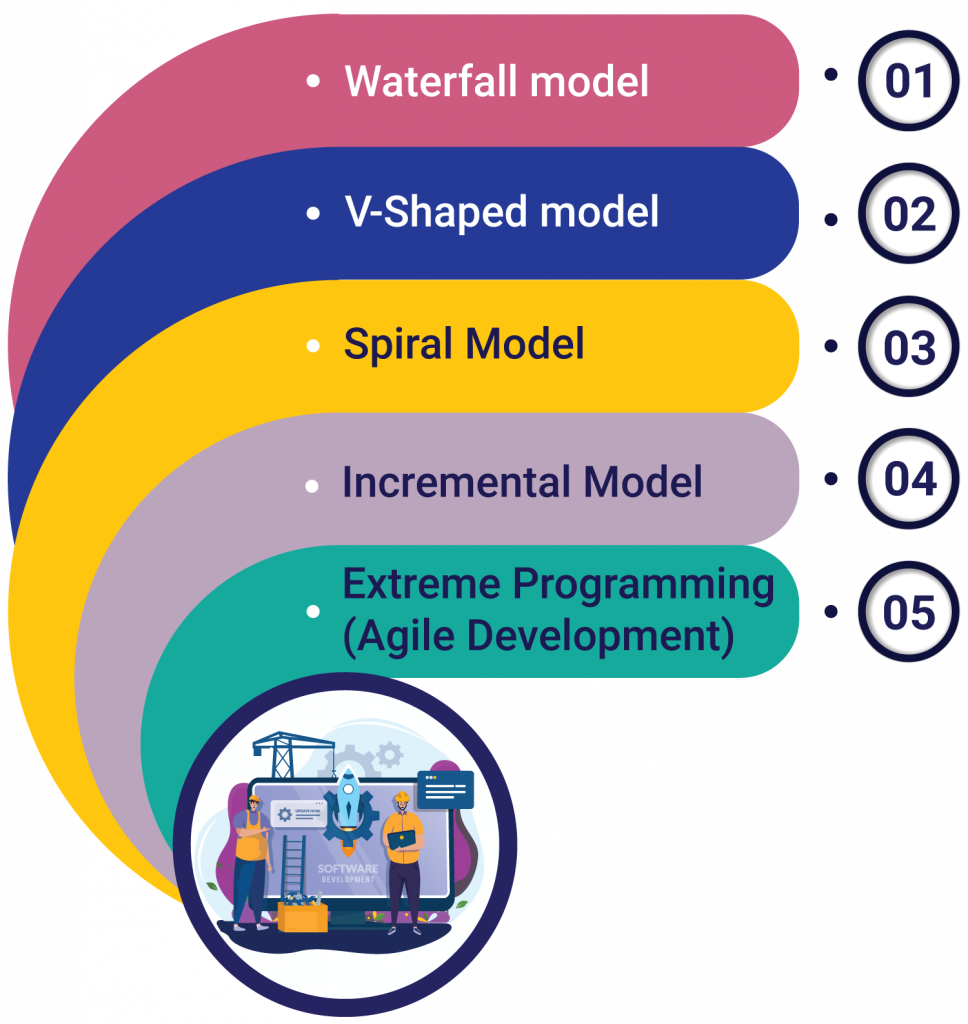
1. Waterfall Model
A waterfall model is a sequential approach, where each fundamental activity of a process is represented as a separate phase, arranged in linear order.
Read Also: How to Reduce Software Development Costs
What It Is:
In principle, the waterfall model should only be applied when requirements are well understood and unlikely to change radically during development as this model has a relatively rigid structure which makes it relatively hard to accommodate change when the process is underway.
Phases:
- Requirement gathering
- Design
- Implementation
- Testing
- Deployment
- Maintenance
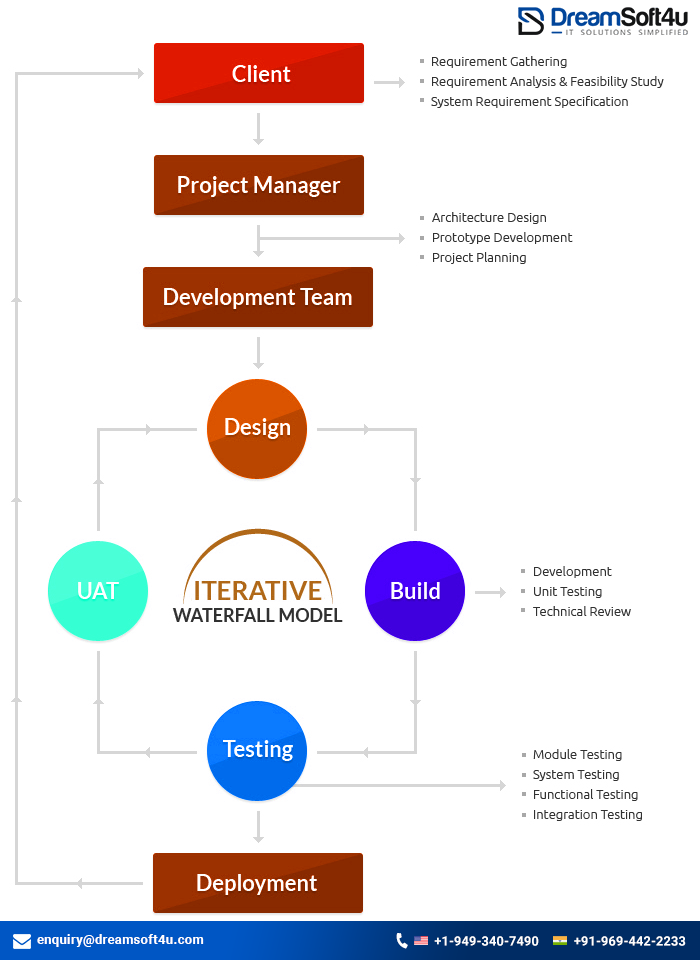
Salient Features:
- It is considered the traditional method of explaining the
software development process. - It is also known as the linear sequential life cycle model.
- In this model, the next phase in the development process won’t begin until and unless the previous phase is completed. The phases don’t overlap each other.
- It is best suitable where requirements are predictable and stable.
- It is best suitable for small projects.
Advantages and Disadvantages:
| Advantages | Disadvantages |
|
|
Read Also: Challenges Of Software Development Startups In IT Industry
2. V-Shaped Model
An extension of the waterfall model, this SDLC methodology tests at each stage of development. As with waterfall, this process can run into roadblocks.
What It Is:
The V-shaped software development process is a take on the classic Waterfall method that makes up for its biggest downfall: A lack of testing.
Who it’s for: Teams working on smaller projects with a tight scope.
Who it’s not for: Teams who want more flexibility and early input from users.
Phases:
- Requirements
- Specifications
- High-level design
- Low-level design
- Development
- Unit testing
- Integration testing
- System testing
- Acceptance testing
Salient Features:
- It is considered an extension of the Waterfall model.
- It is also termed as Verification and validation model.
- Every phase in the developmental cycle is supported by the testing phase.
- Ideal for projects with well-defined equirements, early test planning sets it apart from the waterfall model.
Read Here: How Medical Software Development Empowers Healthcare Delivery?
Advantages and Disadvantages:
| Advantages | Disadvantages |
|
|
Read Also: Breakthrough Of Healthcare Software Development
3. Spiral Method
The Spiral Model is a risk-driven software development process model which includes both waterfall and iterative models.
What It Is:
The spiral model is a software process model that adjusts to the risks and uncertainties involved in different projects. It cuts out any unnecessary steps so you can create an efficient and effective workflow.
The spiral project management model is an iterative one. The first phase begins when you start the project and ends with the client reviewing the design. It was originally proposed by Barry Boehm in his paper from 1986
The software development lifecycle uses a spiral method. In the beginning, you will have a small set of requirements, and they continue on to develop the rest of the needed features
The software engineering team adds functionality to a project as additional requirements are made and the project reaches the production phase.
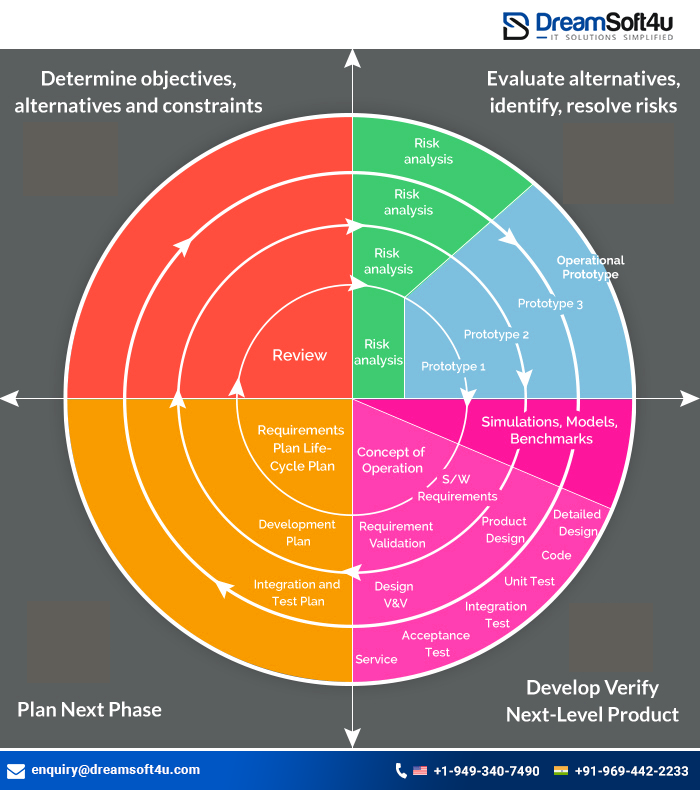
Phases:
- Planning:
- Risk analysis
- Engineering
- Evaluation
Salient Features:
- It is a composite of the Waterfall Model and Iterative Model.
- Each phase of the software development process leads to the formation of a spiral with many loops.
- It is favorable for broad, premium, and complicated projects.
- Each phase is marked with and ends with the client examining the project.
Advantages and Disadvantages:
| Advantages | Disadvantages |
|
|
4. Iterative and Incremental Model
They’re suited for large projects and less expensive for the change of requirements as they support customer interactions with each increment. Initial versions of the software are produced early, which facilitates customer evaluation and feedback.
Read Also: Ways To Crank Up Speed In Software Development
What It Is:
The incremental and iterative software development processes are a middle-ground between the structure and upfront planning of the Waterfall process and the flexibility of Agile. While both follow the idea of creating small bits of software and exposing them to users for feedback, they differ in what you create during each release.
Phases:
- Requirements gathering
- Design
- Implementation
- Testing
- Evaluation
Salient Features:
- This model addresses the shortcomings of the waterfall approach.
- It starts with initial planning and progresses through cycles with the goal of deploying the software.
- The key concept is to build the system in smaller, learn-as-you-go iterations, allowing developers to benefit from insights gained during earlier phases.
- It’s a suitable choice for various scenarios, such as shrink-wrap applications and large systems developed in segmented phases. For instance, in an ERP system, you can begin with the budget module in the first iteration and then move on to the inventory module and other components in subsequent iterations.
Read Also: The Complete Guide Of Telemedicine
Advantages and Disadvantages:
| Advantages | Disadvantages |
|
|
5. Extreme Programming (Agile Development)
What It Is:
The Spiral software development process takes the best parts of different approaches like testing and risk assessment, and combines them with the idea of making steady progress. In this model, developers create a basic version quickly and then keep improving it in small steps. However, a drawback is that it can use up resources quite fast if not carefully managed.
Phases:
- Planning
- Risk assessment
- Development and validation
- Evaluate results and plan the next “loop”
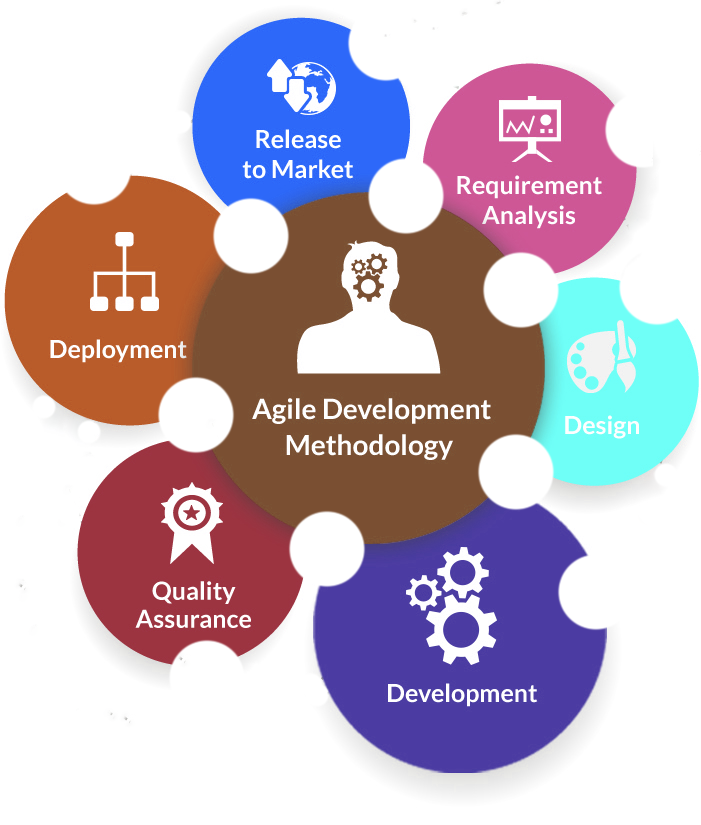
Salient Features:
- Its sole mission is to improve customer satisfaction and process adaptability.
- It can be used with any type of project, but it needs more involvement from customers and to be interactive.
- Also, it can be used when the customer needs to have some functional requirements ready in less than three weeks.
- It is based on an adaptive approach.
- We at Dreamsoft4u work on the same model.
Read Also: How To Avoid Risks Associated With Offshoring Software Development
Advantages and Disadvantages:
| Advantages | Disadvantages |
|
|
Let’s Discuss Your Project
Get a free consultation and let us know your project idea to turn it into an excellent digital product
98+ Client Retention
Final Thoughts
The software development methodologies is a great way to get started with any software project. The above overview and the pros & cons of each will help you identify the best approach that’s right for you and your company.
If you want a successful project, you need to invest in the right development strategy. Be sure to dedicate time & effort to researching different types of development methods and reviewing your budget, resources and time frame at the beginning.
The way to go about planning software development projects involves figuring out what will work best for the individual project.
FAQs
Q1. How to choose the right development methodology for a particular project or team?
The best software development methodology for a project or team depends on the specific project requirements and team composition. However, some of the most popular ones include the waterfall methodology, the agile methodology, and the spiral methodology
Q2. Can multiple software development methodologies be used together?
Many software development methodologies can be used together, and in fact, many organizations use multiple methodologies simultaneously.
Q3. Are there any tools or resources available to implement these methodologies?
At DreamSoft4u, we use agile development tools, code review tools, version control systems, such as Git, and code quality tools. You can too consult our expert and find the right tools depending on your needs and team size.
Q4. How can you tell if a certain methodology is effective for a team/project?
We consider how many bugs are discovered and how long it takes to repair them. Additionally, we track how well a particular methodology fosters teamwork and communication.

